What Is a Single Phase Pad Mounted Transformer? Structure, Function, and Where It’s Used?
Are you struggling to understand the role of single phase pad mounted transformers in power distribution? You’re not alone. Many engineers and project managers find themselves confused by the various transformer types and their applications. But what if you had a clear, comprehensive guide that breaks down everything you need to know about these crucial components of our electrical infrastructure?
A single phase pad mounted transformer is a ground-mounted distribution unit that converts medium-voltage electricity to low voltage for homes or small commercial use. It features a sealed cabinet for safety and is widely used in residential neighborhoods, rural areas, and outdoor utility installations. These transformers are crucial for efficient and safe power distribution in low-capacity, cost-effective scenarios.
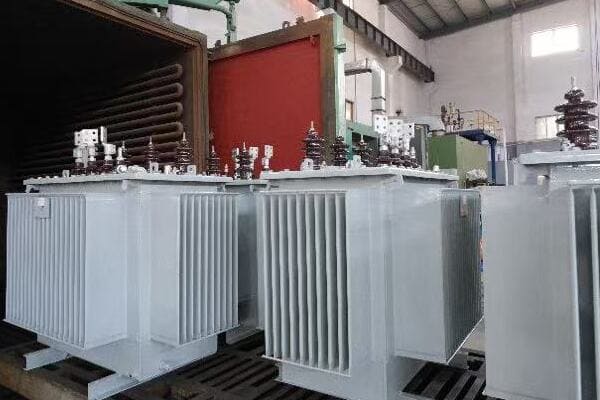
In this comprehensive guide, I’ll walk you through everything you need to know about single phase pad mounted transformers. We’ll explore their structure, function, common applications, and the top manufacturers in the market. Whether you’re a seasoned engineer or new to the field, this article will provide valuable insights to help you make informed decisions about power distribution systems.
What Is a Single Phase Pad Mounted Transformer?
Have you ever wondered about those green boxes you see in residential areas? These are often single phase pad mounted transformers, but what exactly are they, and how do they differ from other transformer types? Understanding these differences is crucial for anyone involved in electrical system design or utility management.
A single phase pad mounted transformer is a ground-level electrical distribution unit that converts medium voltage power to low voltage for residential or small commercial use. It’s enclosed in a weatherproof cabinet and mounted on a concrete pad. Unlike pole-mounted transformers, these units are safer, more aesthetically pleasing, and ideal for underground distribution systems. They typically handle lower capacities compared to three-phase transformers.
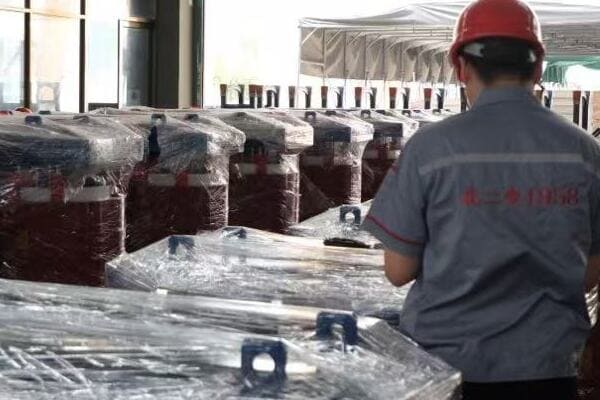
Understanding Single Phase Pad Mounted Transformers
Let’s break down the key aspects:
- Definition and Basic Concept
- Comparison with Other Transformer Types
- Key Features
- Typical Voltage and Capacity Ranges
- Safety and Aesthetic Considerations
Definition and Basic Concept
A single phase pad mounted transformer is:
- A ground-level electrical distribution unit
- Designed to convert medium voltage to low voltage
- Enclosed in a weatherproof, tamper-resistant cabinet
- Mounted on a concrete pad for stability
I recently visited a new suburban development where these transformers were seamlessly integrated into the landscape, providing efficient power distribution without the visual clutter of overhead lines.
Comparison with Other Transformer Types
How they differ:
- Pole-mounted transformers: Elevated, less aesthetically pleasing
- Three-phase pad mounted: Higher capacity, used for larger loads
- Underground transformers: Fully buried, more expensive to install and maintain
During a recent project, we chose single phase pad mounted transformers over pole-mounted ones due to local regulations favoring underground distribution systems.
Key Features
Important characteristics include:
- Sealed, tamper-resistant enclosure
- Oil-filled or dry-type designs available
- Built-in safety features like fuses and lightning arresters
- Easy access for maintenance
Here’s a quick comparison:
| Feature | Single Phase Pad Mounted | Pole-Mounted |
|---|---|---|
| Installation | Ground level | Elevated |
| Aesthetics | Low profile, less visible | More visible |
| Maintenance | Easy access | Requires bucket truck |
| Safety | Enclosed, tamper-resistant | Exposed components |
Typical Voltage and Capacity Ranges
Common specifications:
- Primary voltage: 4.16kV to 34.5kV
- Secondary voltage: 120/240V or 277/480V
- Capacity: 10kVA to 167kVA (typical for residential use)
Safety and Aesthetic Considerations
Benefits in these areas:
- Improved public safety due to ground-level, enclosed design
- Better aesthetics for residential and commercial areas
- Reduced vandalism risk compared to pole-mounted units
Key points about single phase pad mounted transformers:
- Designed for ground-level installation in residential and light commercial areas
- Convert medium voltage to low voltage for end-user consumption
- Offer improved safety and aesthetics compared to pole-mounted transformers
- Typically handle lower capacities suitable for single-phase power needs
- Ideal for underground distribution systems in modern developments
In my experience, the choice of single phase pad mounted transformers often comes down to a balance of safety, aesthetics, and local regulations. I recall a project in a historic district where these transformers were crucial in preserving the area’s character while upgrading the power infrastructure.
For instance, in a recent development in Sharjah, UAE, we utilized single phase pad mounted transformers to reduce construction costs and save wiring space in a new residential area. This choice not only met the technical requirements but also aligned with the modern, clean look the developers were aiming for.
As we move on to discuss the key structural components and working principles, keep in mind how these basic characteristics influence the design and functionality of single phase pad mounted transformers. Understanding these fundamentals will help you appreciate the technical details we’ll explore next.
Key Structural Components and Working Principle?
Are you curious about what’s inside a single phase pad mounted transformer and how it actually works? Understanding the internal structure and operation of these transformers is crucial for anyone involved in electrical system design or maintenance. But what are the key components that make up these transformers, and how do they function together to distribute power safely and efficiently?
Single phase pad mounted transformers consist of several key components: an oil tank or dry-type enclosure, high and low voltage compartments, a single-phase core and windings, bushings, and protective devices. They work by stepping down medium voltage (typically 11kV) to low voltage (usually 240V) through electromagnetic induction. The sealed cabinet design ensures safety and weather protection, while internal components manage the voltage transformation and distribution.
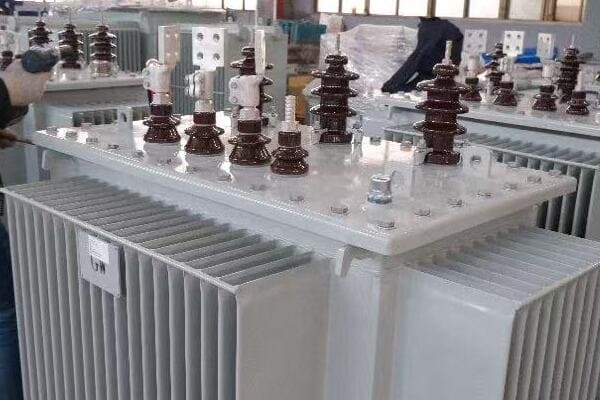
Exploring the Structure and Function
Let’s break down the main components and their roles:
- Transformer Tank and Enclosure
- Core and Windings
- High and Low Voltage Compartments
- Bushings and Terminals
- Protective Devices and Accessories
Transformer Tank and Enclosure
The outer structure:
- Weather-resistant, tamper-proof cabinet
- Oil-filled tank or dry-type enclosure for insulation and cooling
- Typically made of corrosion-resistant materials
I recently inspected a 20-year-old pad mounted transformer where the well-designed enclosure had protected the internal components perfectly, showcasing the importance of a robust outer structure.
Core and Windings
The heart of the transformer:
- Single-phase core, usually made of silicon steel laminations
- Primary (high voltage) and secondary (low voltage) windings
- Copper or aluminum conductors used for windings
During a factory tour, I observed the precision required in winding construction, which directly impacts the transformer’s efficiency and longevity.
High and Low Voltage Compartments
Separate sections for safety:
- High voltage compartment for incoming medium voltage connections
- Low voltage compartment for outgoing distribution connections
- Physical barrier between compartments for added safety
Here’s a quick overview of the compartments:
| Compartment | Voltage Level | Key Components |
|---|---|---|
| High Voltage | 4.16kV – 34.5kV | Bushings, fuses, surge arresters |
| Low Voltage | 120/240V or 277/480V | Bushings, circuit breakers |
Bushings and Terminals
Connection points:
- High voltage bushings for incoming power
- Low voltage bushings for outgoing distribution
- Designed for easy connection and maintenance
Protective Devices and Accessories
Safety and monitoring equipment:
- Fuses and circuit breakers for overcurrent protection
- Lightning arresters for surge protection
- Temperature and pressure monitoring devices
- Oil level indicators (for oil-filled units)
Key points about the structure and working principle:
- The enclosure provides crucial protection and safety
- Core and windings are the main components for voltage transformation
- Separate compartments ensure safe handling of different voltage levels
- Bushings and terminals facilitate power input and output
- Protective devices safeguard against various electrical faults
In my experience, understanding these components is crucial for effective maintenance and troubleshooting. I recall a case where identifying a minor issue with a bushing connection during routine inspection prevented a potential transformer failure.
For example, in a recent project upgrading a rural power distribution system, we focused on selecting pad mounted transformers with enhanced surge protection features. This decision was based on the area’s history of lightning strikes, demonstrating how understanding the function of each component can lead to more resilient system designs.
As we move on to discuss where these transformers are commonly used, keep in mind how the structure and working principle influence their suitability for different applications. This understanding will help you appreciate why single phase pad mounted transformers are preferred in certain scenarios over other types of transformers.
Where Are These Transformers Commonly Used?
Have you ever wondered why you see those green boxes in certain neighborhoods but not others? Understanding where single phase pad mounted transformers are typically deployed is crucial for urban planners, electrical engineers, and utility managers. But what specific environments and scenarios are best suited for these transformers, and why are they chosen over other options?
Single phase pad mounted transformers are commonly used in residential neighborhoods, rural areas, small commercial facilities, and landscape-sensitive projects. They’re ideal for underground distribution systems in suburban developments, individual rural households, and small businesses in the Middle East and Latin America. These transformers are particularly valuable in projects where aesthetics are important, as they eliminate the need for unsightly overhead power lines.
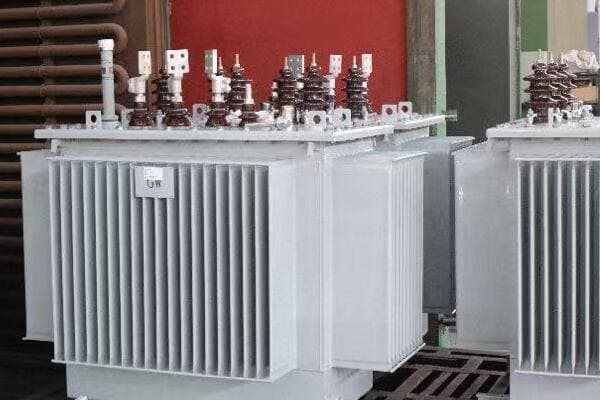
Common Applications of Single Phase Pad Mounted Transformers
Let’s explore the main areas where these transformers are typically used:
- Residential Neighborhoods
- Rural Power Distribution
- Small Commercial Facilities
- Aesthetic-Focused Developments
- Specific Regional Applications
Residential Neighborhoods
Widely used in suburban areas:
- Underground power distribution in new housing developments
- Retrofitting older neighborhoods to remove overhead lines
- Serving groups of homes with shared power needs
I recently worked on a project in a new suburban development where single phase pad mounted transformers were key to creating a clean, modern aesthetic while providing reliable power to each home.
Rural Power Distribution
Essential for remote areas:
- Serving individual farms or small clusters of rural homes
- Ideal for areas with long distances between power users
- Easy to install and maintain in remote locations
During a rural electrification project, we used these transformers to bring power to isolated communities, appreciating their flexibility and ease of installation.
Small Commercial Facilities
Perfect for light commercial use:
- Strip malls and small shopping centers
- Office parks and small business complexes
- Schools and small public buildings
Here’s a quick overview of typical applications:
| Setting | Typical Capacity | Key Benefit |
|---|---|---|
| Suburban Home | 25-50 kVA | Aesthetic integration |
| Rural Property | 10-25 kVA | Easy individual service |
| Small Business | 50-167 kVA | Reliable commercial power |
Aesthetic-Focused Developments
Chosen for visual appeal:
- High-end residential communities
- Historic districts undergoing modernization
- Tourist areas where visual impact is a concern
Specific Regional Applications
Tailored solutions for different markets:
- Middle East: Used in small commercial facilities and residential compounds
- Latin America: Popular in growing suburban areas and small towns
- North America: Standard in new suburban developments
Key points about common applications:
- Ideal for residential areas with underground power distribution
- Suitable for individual service in rural and remote locations
- Effective for small commercial and light industrial applications
- Preferred in projects where aesthetics are a primary concern
- Adaptable to various regional needs and standards
In my experience, the versatility of single phase pad mounted transformers makes them invaluable in a wide range of scenarios. I’ve seen how their use can significantly enhance the visual appeal and functionality of various developments.
For instance, in a recent project in Sharjah, UAE, we implemented single phase pad mounted transformers in a new residential area. This choice not only reduced construction costs and saved wiring space but also aligned perfectly with the modern, uncluttered look the developers were aiming for. The transformers’ compact design and underground cabling system allowed for more green spaces and wider sidewalks, enhancing the overall quality of life for residents.
As we move on to discuss the top manufacturers of these transformers, keep in mind how these diverse applications influence the design and features offered by different brands. Understanding the common uses will help you appreciate why certain manufacturers might specialize in specific aspects of single phase pad mounted transformer technology.
Top Manufacturers of Single Phase Pad Mounted Transformers (China + Global)?
Are you finding it challenging to choose between different single phase pad mounted transformer manufacturers? With a global market full of options, it can be overwhelming to determine which brand best suits your needs. But how do the top manufacturers, both in China and globally, compare in 2025, and what unique features do they offer?
Leading manufacturers of single phase pad mounted transformers include CHBEB from China, ABB, SUNTEN Electric, and GE Grid Solutions globally. CHBEB excels in high protection ratings and Middle Eastern projects. ABB offers ANSI/IEEE standard compliance with high safety features. SUNTEN provides cost-effective solutions for domestic infrastructure. GE Grid dominates the North American market with comprehensive UL certifications. Each brand offers unique strengths suited to different regional and application needs.
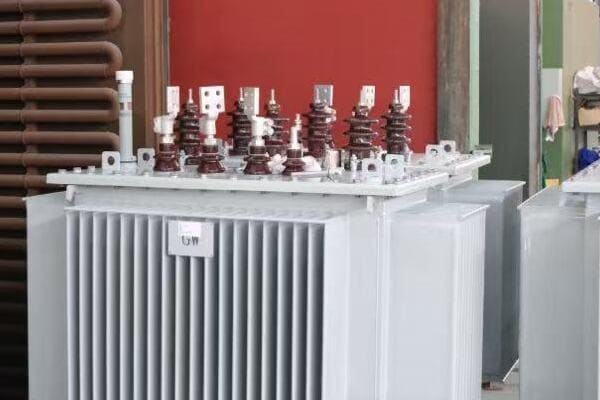
Comparing Top Manufacturers
Let’s examine the strengths of leading brands:
- CHBEB (China)
- ABB (Global)
- SUNTEN Electric (China)
- GE Grid Solutions (Global)
- Key Factors for Brand Selection
CHBEB (China)
Strengths and specializations:
- High protection ratings suitable for harsh environments
- Extensive experience in Middle Eastern projects
- Customization capabilities for specific regional needs
I recently worked on a project in Saudi Arabia where CHBEB’s transformers were chosen specifically for their ability to withstand extreme desert conditions while meeting local regulatory requirements.
ABB (Global)
Notable features:
- Compliance with ANSI/IEEE standards
- High safety performance ratings
- Strong presence in North American and European markets
During a recent suburban development project in Canada, ABB’s transformers were selected due to their excellent safety features and full compliance with local utility standards.
SUNTEN Electric (China)
Key advantages:
- Cost-effective solutions for large-scale projects
- Quick response and production times
- Popular choice for domestic infrastructure projects in China
Here’s a comparison of these top brands:
| Brand | Key Strength | Best For | Notable Feature |
|---|---|---|---|
| CHBEB | High protection | Middle East projects | Customization for harsh environments |
| ABB | Safety standards | North American/European markets | ANSI/IEEE compliance |
| SUNTEN | Cost-effectiveness | Chinese infrastructure | Rapid production and delivery |
| GE Grid | Market dominance | North American utilities | Comprehensive UL certifications |
GE Grid Solutions (Global)
Distinctive features:
- Large market share in North America
- Comprehensive UL certifications
- Often specified by major utility companies
Key Factors for Brand Selection
When choosing a manufacturer, consider:
- Regional standards and certifications required
- Specific environmental challenges of the installation site
- Budget constraints and long-term cost considerations
- After-sales support and spare parts availability
- Customization needs for unique project requirements
Key points about top manufacturers:
- CHBEB offers strong solutions for challenging environments, especially in the Middle East
- ABB excels in safety and compliance with international standards
- SUNTEN provides cost-effective options, particularly for large-scale domestic projects
- GE Grid is a go-to choice for North American utility companies
- Brand selection should align with specific project needs and regional requirements
In my experience, choosing the right manufacturer often comes down to balancing technical specifications, regional expertise, and long-term support. I’ve seen cases where a less globally recognized brand was the perfect fit due to their specialization in certain areas.
For example, in a recent project upgrading the power distribution in a rural area of Latin America, we chose CHBEB transformers over more well-known global brands. Their experience in designing for high-humidity environments and their ability to provide rapid customization proved invaluable in meeting the project’s unique challenges and tight timeline.
As we conclude with the technical advantages and limitations of single phase pad mounted transformers, remember that the choice of manufacturer can significantly impact the overall performance and reliability of your power distribution system. Consider not just the immediate technical needs but also long-term factors like support, spare parts availability, and potential for future upgrades.
Technical Advantages and Limitations?
Are you weighing the pros and cons of using single phase pad mounted transformers in your project? Understanding both the advantages and limitations of these transformers is crucial for making informed decisions in electrical system design. But what specific benefits do they offer, and what limitations should you be aware of when considering their use?
Single phase pad mounted transformers offer several advantages including enhanced safety through enclosed design, aesthetic appeal, and flexibility in underground distribution systems. They’re ideal for low-capacity, cost-effective power distribution in residential and light commercial areas. However, they have limitations such as lower capacity compared to three-phase units, higher initial costs than pole-mounted transformers, and unsuitability for high-load or three-phase applications.
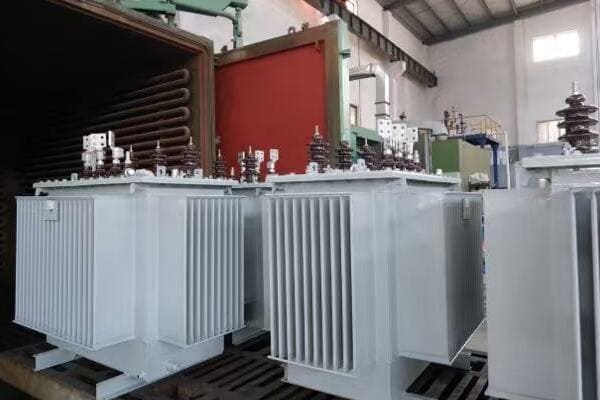
Analyzing Advantages and Limitations
Let’s explore the key technical aspects:
- Safety and Protection
- Aesthetic and Environmental Considerations
- Installation and Maintenance
- Capacity and Load Handling
- Cost Factors
Safety and Protection
Advantages:
- Enclosed design provides superior safety
- Reduced risk of electrical accidents
- Better protection against vandalism and weather
Limitations:
- Access for maintenance requires special procedures
- Potential for oil leaks in oil-filled units
I recently worked on a project where the enhanced safety features of pad mounted transformers were crucial in gaining approval for a new residential development near a school zone.
Aesthetic and Environmental Considerations
Advantages:
- Low profile design blends with surroundings
- Eliminates need for unsightly overhead lines
- Reduced impact on local wildlife (no aerial hazards)
Limitations:
- Requires careful placement to avoid flooding
- May still be visible in open landscapes
During a recent urban renewal project, the use of pad mounted transformers significantly improved the visual appeal of the neighborhood, contributing to increased property values.
Installation and Maintenance
Advantages:
- Easier to install in new developments
- Ground-level access simplifies maintenance
- Ideal for underground distribution systems
Limitations:
- Requires concrete pad and proper drainage
- More complex to replace than pole-mounted units
Here’s a comparison of installation and maintenance aspects:
| Aspect | Pad Mounted | Pole Mounted |
|---|---|---|
| Installation Complexity | Moderate | Lower |
| Accessibility | Easy (ground level) | Difficult (requires lift) |
| Space Requirements | More ground space | Minimal ground space |
| Maintenance Ease | Higher | Lower |
Capacity and Load Handling
Advantages:
- Suitable for most residential and light commercial needs
- Can be easily upgraded in some models
Limitations:
- Lower capacity compared to three-phase units
- Not suitable for heavy industrial applications
Cost Factors
Advantages:
- Often more cost-effective for underground systems
- Lower long-term maintenance costs
Limitations:
- Higher initial cost compared to pole-mounted transformers
- Additional expenses for pad construction and landscaping
Key points about technical advantages and limitations:
- Enhanced safety and aesthetics are major advantages
- Well-suited for underground distribution in residential areas
- Easier maintenance but more complex installation compared to pole-mounted units
- Limited capacity makes them unsuitable for high-load applications
- Cost-effectiveness depends on specific project requirements and long-term considerations
In my experience, the decision to use single phase pad mounted transformers often comes down to a balance of safety, aesthetics, and long-term cost considerations. I’ve seen projects where the initial higher cost was easily justified by improved safety and reduced maintenance needs over time.
For instance, in a recent project renovating an old industrial area into a mixed-use development, we chose pad mounted transformers despite their higher upfront cost. This decision not only met strict urban safety codes but also significantly enhanced the area’s visual appeal, contributing to the success of the redevelopment project.
It’s important to carefully weigh these advantages and limitations against your specific project needs. While single phase pad mounted transformers excel in many residential and light commercial applications, they may not be the best choice for all scenarios. Always consider factors like load requirements, future growth potential, and local regulations when making your decision.
Conclusion
Single phase pad mounted transformers offer a safe, aesthetically pleasing solution for power distribution in residential and light commercial areas. Their enclosed design, suitability for underground systems, and ease of maintenance make them ideal for modern developments. However, their capacity limitations and higher initial costs should be considered. Choosing the right manufacturer and model based on specific project needs is crucial for optimal performance and long-term satisfaction.
Remember, at chbeb-ele, we’re not just sharing information – we’re empowering you to be part of the solution in creating a secure, clean, and efficient energy future. Let’s continue this journey together.
Free CHBEB Transformer Catalog Download
Get the full range of CHBEB transformers in one catalog.
Includes oil-immersed, dry-type, pad-mounted, and custom solutions.
Quick Message
Request A free quote
We'd like to work with you
- +86 15558785111
- [email protected]
- +86 15558785111
What We Do
CHINA BEI ER BIAN (CHBEB) GROUP, with 218 million in registered capital, originated from Beijing Beierbian Transformer Group. Headquartered in Beijing for R&D, it operates major production bases in Nanjing and Yueqing, producing high-quality products.
Latest Product
address
BeiJing
No 3,RongJing East Road,BeiJing Economic Technological Development Area,BeiJing,China
JiangSu
No 7️Xiangfeng Road,Jiangning,NanJing,JiangSu,China
WenZhou
No.211, Wei 16 Road, Industrial Zone, Yueqing, Wenzhou, Zhejiang, China.
XiangYang Industrial Zone ,YueQing,WenZhou,ZheJiang,China
contact us
- [email protected]
- +86 13057780111
- +86 13057780111
- +86 15558785111
Copyright © Bei Er Bian Group


